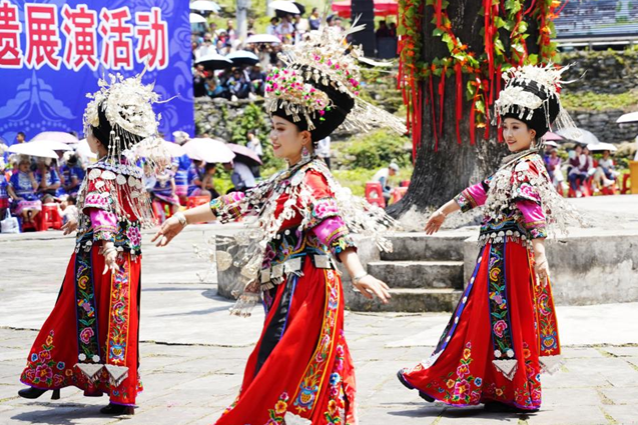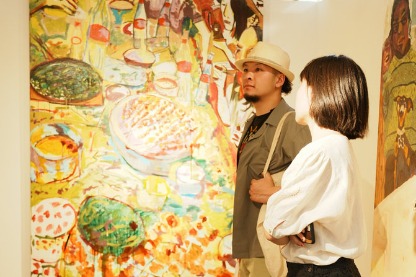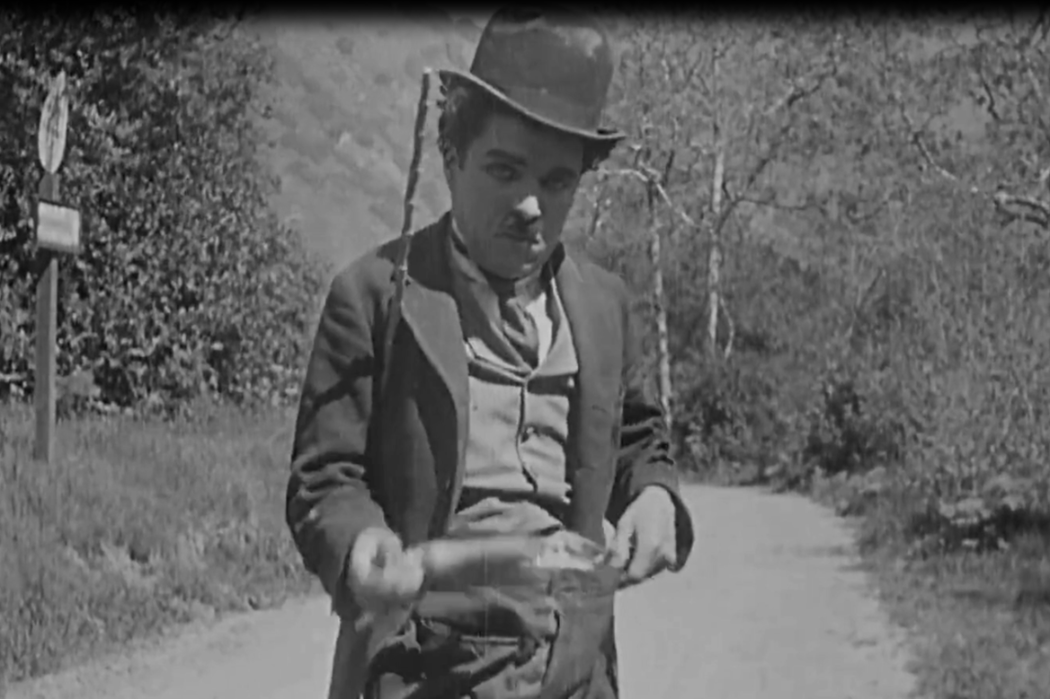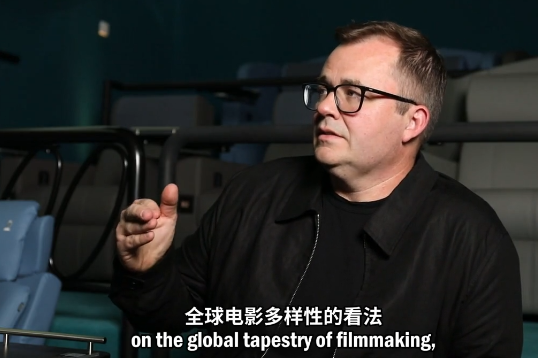Art speaks through dance in A Tapestry of a Legendary Land


That night at Peking University's sports complex felt almost otherworldly. As I settled into my seat in the makeshift cinema hall, a big screen lit up, revealing the visuals of A Tapestry of a Legendary Land.
This film, adapted from the dance drama of the same name and inspired by a renowned ancient Chinese painting, was more than just beautiful to watch. It felt like being pulled into a world of creativity and stories that felt both timeless and alive. I had come expecting entertainment, but what I got was something deeper that stayed with me long after the houselights came back on.
As a Malaysian raised in a multicultural mosaic, I've always been fascinated by how history, culture, and art intertwine. My first encounter with A Tapestry of a Legendary Land was during the 2022 Spring Festival Gala, when the lead dancer's lunge backbend became one of the night's most striking moments.
What caught my attention, however, was how the soft shades of greenish cyan and indigo blue in the dancers' costumes blended effortlessly with the graceful flow of their long sleeves, creating an almost painterly effect as if the painting itself had come to life. Years later, when the dance was adapted into a film, I found myself at the global premiere on my campus, thanks to a kind classmate who offered me a ticket to relive the experience. The serendipity of it all made my journey into what I hold dear even more special.
Seeing the film again, now in its full form, allowed me to reflect more on the story and its artistic depth. The film follows a researcher specializing in ancient artifacts, who, while preparing an exhibition on a legendary painting titled A Thousand Miles of Rivers and Mountains, is transported back to the Song Dynasty (960-1279), the time when the artwork was created. There, he meets Wang Ximeng, the young artist behind the aforementioned masterpiece, and witnesses the immense effort and passion that went into its creation.
Unlike the narratives I grew up with, the film forgoes conventional, dialogue-heavy approaches; instead, it relies on choreography which blends strength and grace, amplified by stunning visual effects. Without uttering a single word, each dance performance embodies precision and fluidity, conveying complex emotions and shaping multidimensional portrayals of the characters. Its storytelling, rich in poetic symbolism and visual grandeur, gave me a newfound appreciation for the way its old-time tales are told.
Moreover, it made me realize that a good story is neither heard nor read but felt.
Wang's story was not merely a glimpse into the past but a reflection of the artistry and dedication that defined his era. His brilliance, though central, was only part of the plot. Behind his masterpiece stood countless individuals — craftsmen, weavers, ink makers, stone grinders, brush makers — each playing a vital role. In addition to these artisans, generations of researchers ensured the painting's survival to this day.
Their contributions, often overlooked, were essential in preserving both the art and the tradition it represents, leaving a lasting mark on a legacy that endures. This serves as a reminder that great art is rarely the creation of a single mind but rather a collaboration of many. As the film reached its emotional peak, the significance of this collective effort turned out even more profound when Wang eventually completed his final retouching.
Though Wang is believed to have died at a very young age, his masterpiece lives on, and the legacy of those who contributed to it remains etched in history.
What began as a cultural rediscovery evolved into a meditation on the nature of art, time, and collective memory. As soaring orchestral music filled the air, I felt a rare surge of emotion, an unexpected reaction for me, yet one that seemed inevitable in the face of such a compelling drama. In the days that followed, my thoughts kept returning to that night. I was struck by how A Tapestry of a Legendary Land resonated with me personally. The beauty lies in how it connects us to the past while living in the present.
In the end, I couldn't help but feel how important it is to preserve artifacts like paintings and other priceless objects. Just as with Wang's artwork, these artifacts, even in their silence, carry the rich stories and emotions of their makers. I believe each of us has a role in being the voice for such treasures. In this way, the film itself stands as a testament to the power of preservation. Therefore, if you have the chance, I highly recommend watching the film, as it allows you to awaken feelings and deepen your appreciation for the cultural heritage you may have forgotten to value.





































